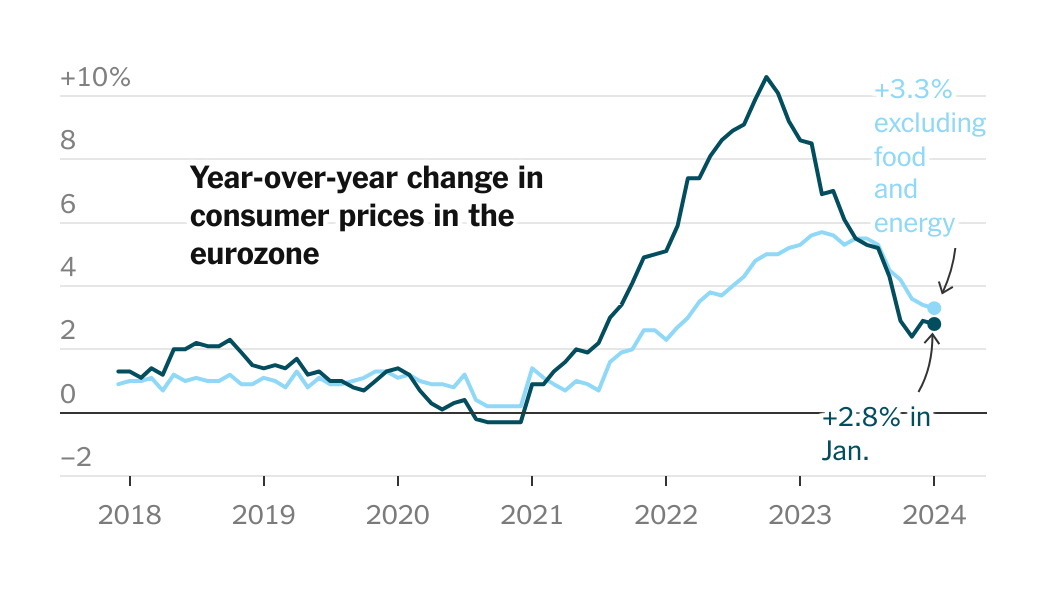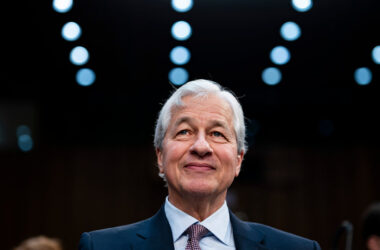The News
Inflation across the 20 countries using the euro eased in the first month of 2024, returning to a downward trend and feeding hopes that prices in the eurozone were on their way back to the 2 percent target set by the European Central Bank.
Consumer prices in the eurozone rose 2.8 percent in January, compared with a year earlier, down from 2.9 percent in December, the European Union’s statistics agency reported Thursday.
Economists had expected to see a slightly bigger dip, effectively a correction after the lapse of some government subsidies drove inflation higher in December.
Why It Matters: The timing of interest rate cuts depends on data
Investors are watching for signs that the European Central Bank will lower interest rates, which policymakers last week held at a record high of 4 percent. Christine Lagarde, the central bank’s president, has hinted that a rate cut could come around midyear, but policymakers would be looking at data to inform their decisions.
The numbers released on Thursday could raise expectations that rates may come down sooner rather than later. Core inflation, the rate of inflation that excludes the volatile prices of food and energy, continued its downward trend, cooling to 3.3 percent in January from 3.4 percent in December. That figure is crucial to the E.C.B., as it reflects underlying trends in prices across the eurozone.
Europe’s statistics agency reported Tuesday that the eurozone economy stagnated in the fourth quarter of last year, hampered by a lingering energy crisis and a slump in manufacturing in Germany, Europe’s largest economy.



